Hotter than Hanoi and just as humid, Hoi An is a charming little town about 5 km inland from the sea and around 180 km south of the old demilitarized zone in what was South Vietnam. At the moment, it is unspoilt but that is not going to last much longer as the entire coastline to the north is under intense development by the big resort hotels. Thousands of hotel rooms and holiday apartments are soon to appear that will change the area for ever. I don’t know whether that’s good or bad. I suppose the locals will welcome the tourist dollar but, from a traveler’s point of view, another glorious and undiscovered little part of the world will be gone.
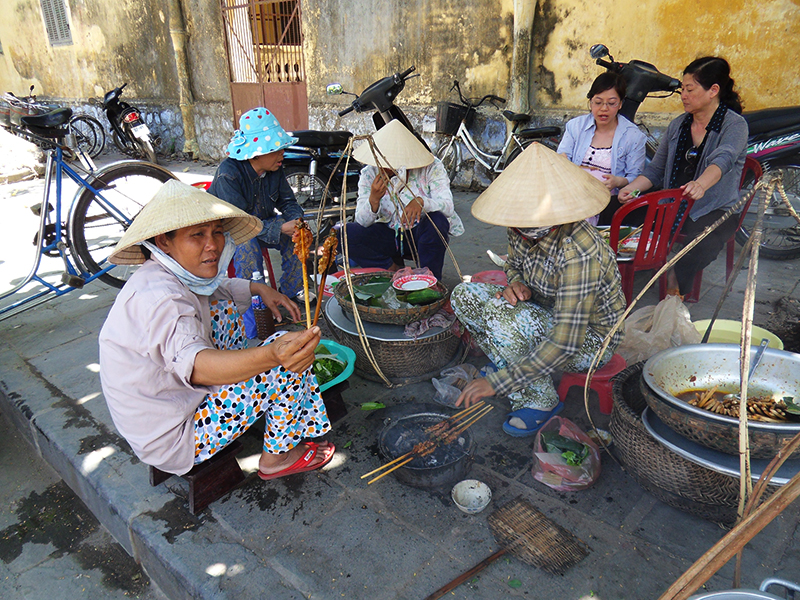 The town is full of small streets and alleyways around which bikes of all kinds weave about dodging pedestrians. The local shops are either cloth shops (tailors to you and me) or sell art, some of it excellent. There are small restaurants, many with their own specialty, and a few places selling tours and renting bikes. It’s all done in a very laid back style and even the street sellers only need to be told ‘no’ once.
The town is full of small streets and alleyways around which bikes of all kinds weave about dodging pedestrians. The local shops are either cloth shops (tailors to you and me) or sell art, some of it excellent. There are small restaurants, many with their own specialty, and a few places selling tours and renting bikes. It’s all done in a very laid back style and even the street sellers only need to be told ‘no’ once.
The Thu Bon River runs alongside the town in its final journey to the South China Sea. Small fishing boats park themselves opposite the town providing a reminder that Hoi An was once an ancient trading port with a history that stretches back as far as 1,000 AD and, roaming the narrow lanes at night around the waterfront, it’s easy to imagine how it might have looked hundreds of years ago.
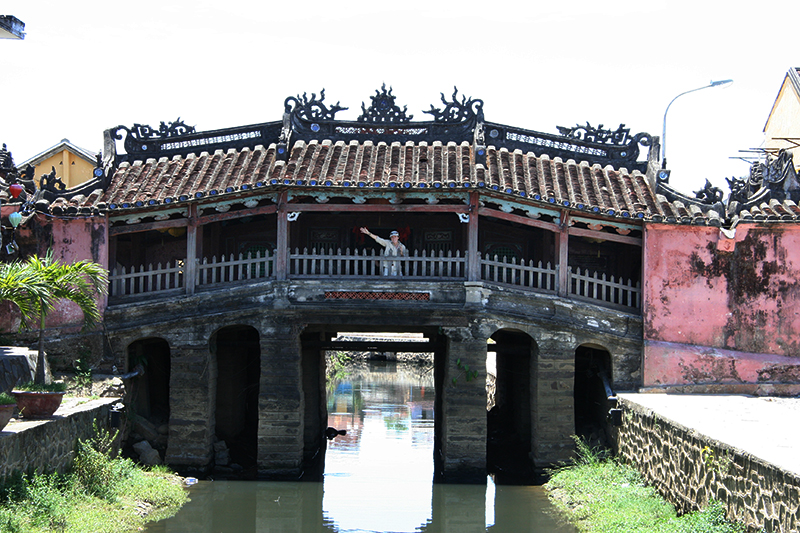 The Japanese Covered Bridge that spans one of the little canals running into the river is a fine example of the town’s history. It was constructed in 1593 complete with a roof and a temple built into its northern side. According to local legend, it was started in the year of the monkey and finished in the year of the dog. Thus, it has one entrance guarded by a monkey and the other by a dog. The bridge is very much in use, people cross it as part of their daily routine, and it embodies perfectly Hoi An’s charm, historical perspective and modern day usage. The town does not seem to realise that it’s a living museum.
The Japanese Covered Bridge that spans one of the little canals running into the river is a fine example of the town’s history. It was constructed in 1593 complete with a roof and a temple built into its northern side. According to local legend, it was started in the year of the monkey and finished in the year of the dog. Thus, it has one entrance guarded by a monkey and the other by a dog. The bridge is very much in use, people cross it as part of their daily routine, and it embodies perfectly Hoi An’s charm, historical perspective and modern day usage. The town does not seem to realise that it’s a living museum.
I tried out a modern day ‘cloth shop’. I wanted to get a favourite pair of trousers copied before I trashed them. In addition, my blue shorts that I always wear for trekking, had developed holes where my backpack rubbed and the crutch now had air conditioning as well. I had the trousers made first and returned twenty-four hours later to collect them. Other than the material being too heavy they had done a good job but I got so fed up with the shop’s couldn’t-care-less attitude that I took my shorts elsewhere. This time I got an even better job and I got the right weight of material but the wrong colour (greenish). I shall just have to hope that fellow travelers don’t think I got dressed in the dark.
What to do with my faithful old pair of shorts? Irritatingly, the tailor had butchered the pockets rendering them all but useless. Being one of those people who cannot bring themselves to throw things away (Mother’s genes), the only option is for an appropriately solemn burial. So far on this trip, I have worn out only my dreadful Merrell boots (but they are probably being put to good use by a member of one of Australia’s minority tribes). I lost my precious cap, which was ripped from head by the wind in Patagonia and flung into the centre of a greeny-blue glacial lake. I felt bad for two days. All Debbie has lost is her knickers.
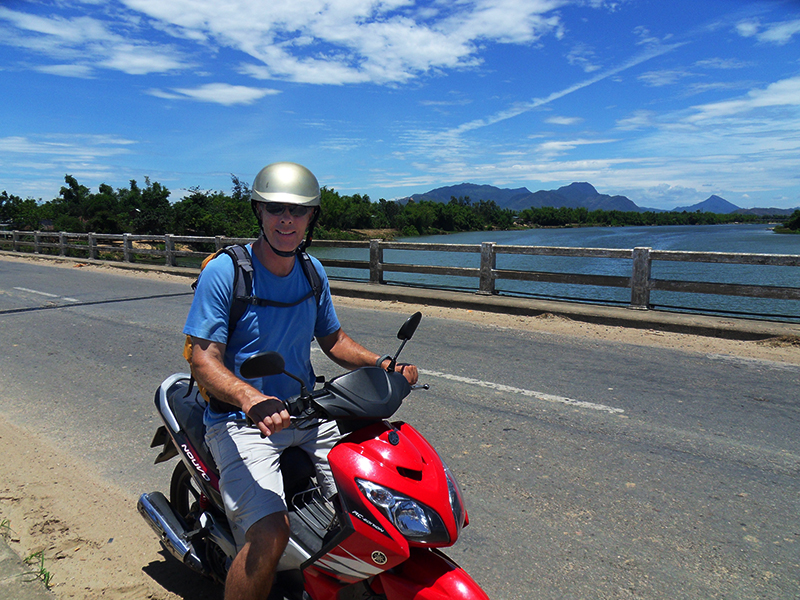 To brighten the mood, we hired a motorbike and took a day trip out to an ancient village called My Son. It is part of the ancient Champa Kingdom that ruled the area from the 4th to the 13th Century AD and which developed trade with countries as far away as India, Brunei and Indonesia. We left at 6.00am in an attempt to avoid the tour buses that would disgorge hundreds of tourist and trippers and flood the sight with people who would get into every photograph.
To brighten the mood, we hired a motorbike and took a day trip out to an ancient village called My Son. It is part of the ancient Champa Kingdom that ruled the area from the 4th to the 13th Century AD and which developed trade with countries as far away as India, Brunei and Indonesia. We left at 6.00am in an attempt to avoid the tour buses that would disgorge hundreds of tourist and trippers and flood the sight with people who would get into every photograph.
To get there we had a sketch map drawn by the chap in our hotel reception whom we later discovered had not actually been there. His directions were somewhat inaccurate causing us an extra 45 minute detour in the wrong direction but, at least, Debbie’s Vietnamese was put to good use asking directions. Riding a bike down highway 1 was an interesting experience. Traffic comes at us from everywhere: vehicles pull to the right to turn left, people join the traffic without as much as a glance, heavy lorries, belching smoke, plough through traffic, expecting the path to be cleared for them and overtaking traffic can be four abreast and take up the entire road. It’s not unusual for motorbikes to coming the wrong way on the inside of my road, nor is it unusual for four people to ride on one moped. People carry loads that we would think impossible, including livestock (pigs), scaffolding poles, sacks of concrete or huge bags of vegetables. The police stand idly at the side of the road looking thoroughly bored, hoping for an accident. I don’t just need to have exceptional spatial awareness, I need military standard radar. For added pleasure, I get punched in the face regularly by large bodied, buzzy insects and, having been struck in the teeth, I learn to keep my mouth shut. With all the exhaust fumes as well, I can understand why all the local motorcyclists wear cloth masks.
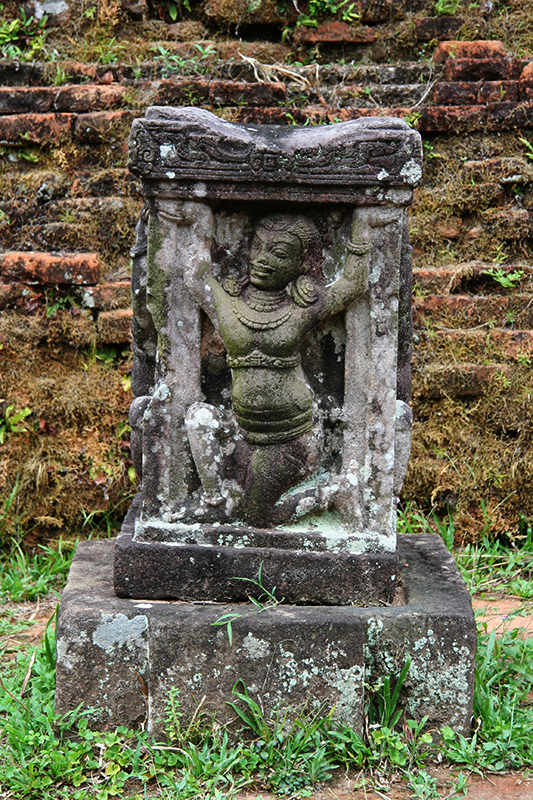 With our diversions, we finally got to My Son just ahead of the first tourist buses. The ruins are nestled in a hot and humid lush valley, surrounded by hills and the massive Hon Quap (Cat’s Foot Mountain). Constructed according to Hindu principles, it was a religious and administrative centre under King Bhadravarman in the late 4th century and was occupied until the 13th century – the longest period of development of any city in the Mekong region. It is similar to other ancient sites in Vietnam, Cambodia and Indonesia as the influence of the Charm people was extensive.
With our diversions, we finally got to My Son just ahead of the first tourist buses. The ruins are nestled in a hot and humid lush valley, surrounded by hills and the massive Hon Quap (Cat’s Foot Mountain). Constructed according to Hindu principles, it was a religious and administrative centre under King Bhadravarman in the late 4th century and was occupied until the 13th century – the longest period of development of any city in the Mekong region. It is similar to other ancient sites in Vietnam, Cambodia and Indonesia as the influence of the Charm people was extensive.
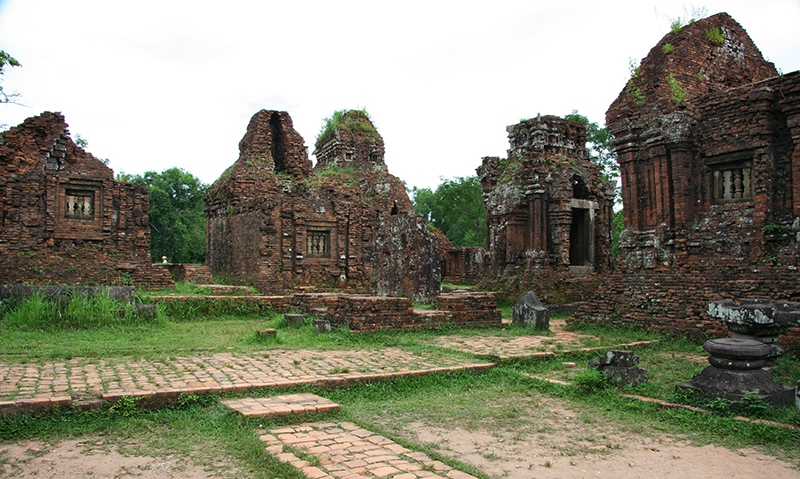 Each building is constructed by thousands of small red clay bricks with the walls embellished with figures depicting the Heavenly One, a Hindu god. The door pillars and frames are made from white sandstone and the interiors of the more important buildings have sacrificial altars. Between the buildings are more statues of gods and animals and, originally, there were many intrically carved sandstone columns all around the site. Unfortunately, all of these are now lying on the ground through a mixture of earth shifting and American bombing (whilst pointing to a large crater, we overheard a guide remarking that it had been caused by a large bomb dropped from a B52 during the war).
Each building is constructed by thousands of small red clay bricks with the walls embellished with figures depicting the Heavenly One, a Hindu god. The door pillars and frames are made from white sandstone and the interiors of the more important buildings have sacrificial altars. Between the buildings are more statues of gods and animals and, originally, there were many intrically carved sandstone columns all around the site. Unfortunately, all of these are now lying on the ground through a mixture of earth shifting and American bombing (whilst pointing to a large crater, we overheard a guide remarking that it had been caused by a large bomb dropped from a B52 during the war).
The site is not in very good condition being overgrown by the creeping jungle that wormed itself between the structure of the buildings. But, at least, there were no restrictions on where we could go – within the site that is because thick impenetrable jungle forest surrounded the area in menacing fashion, waiting for a chance to subsume the ancient city.
When our interest was satisfied and the incoming tourists had thoroughly infested the site, we wandered back on our bike, taking time to stop often along the scenic route to enjoy and photograph various sights. We took some coffee at a local road-side hostelry, poked our noses into fields and houses and even went on an off road mystery tour through the fields.
Again, it was great fun on the bike and we felt like liberated, independent travelers being able to go wherever we wanted at our own pace. The historic area of Hoi An and My Son was charming and quaint but with a vitality that was almost tangible. It had been an excellent stop on out trip through Vietnam but, we still wonder how long this unspoilt area will be able to retain its charm and laid back attitude once the entire coastline is concreted over with resort hotels.

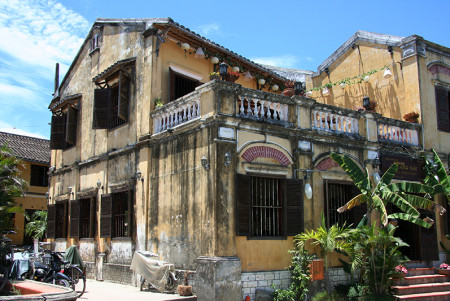
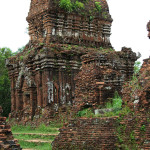
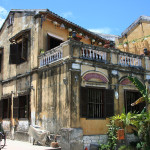
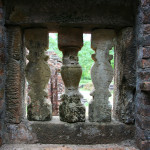
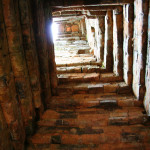
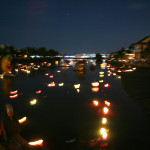
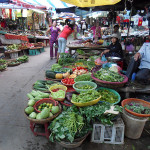
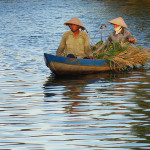
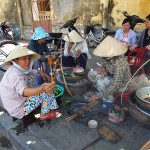
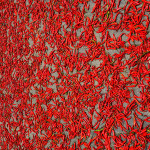

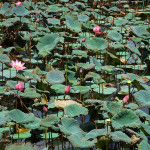
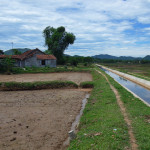
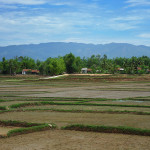
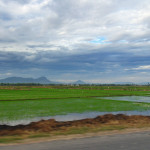
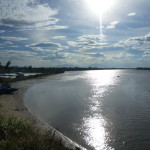
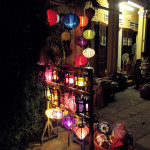
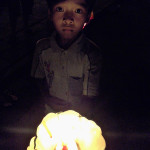
No comments yet.